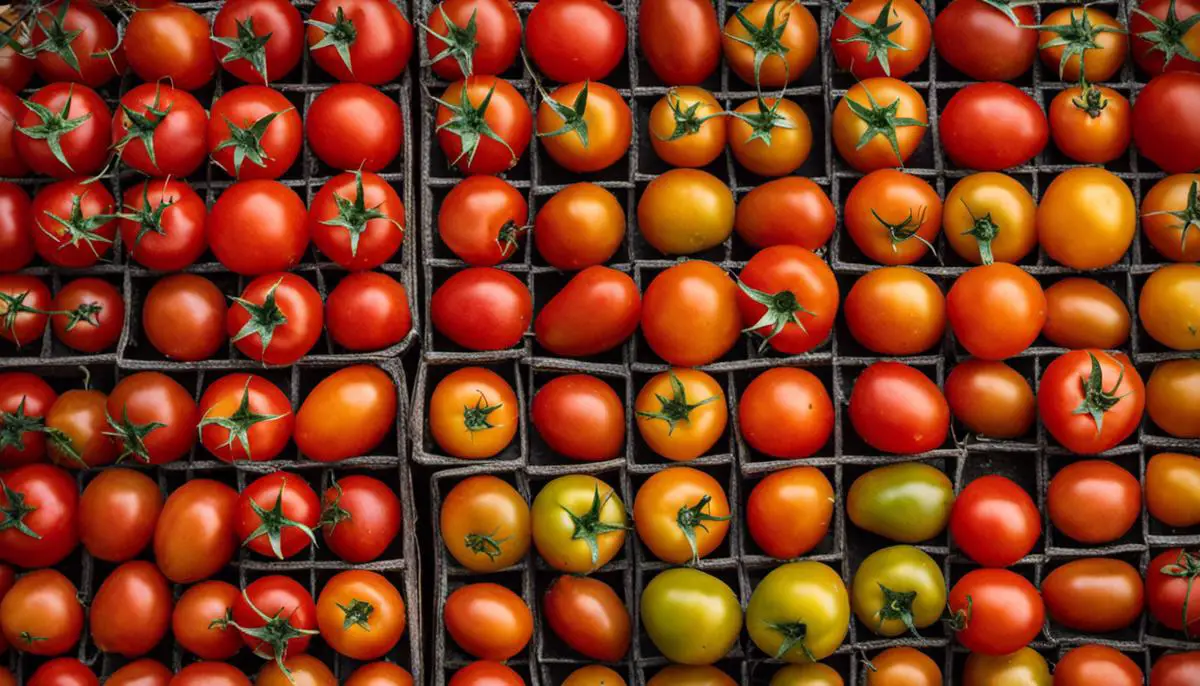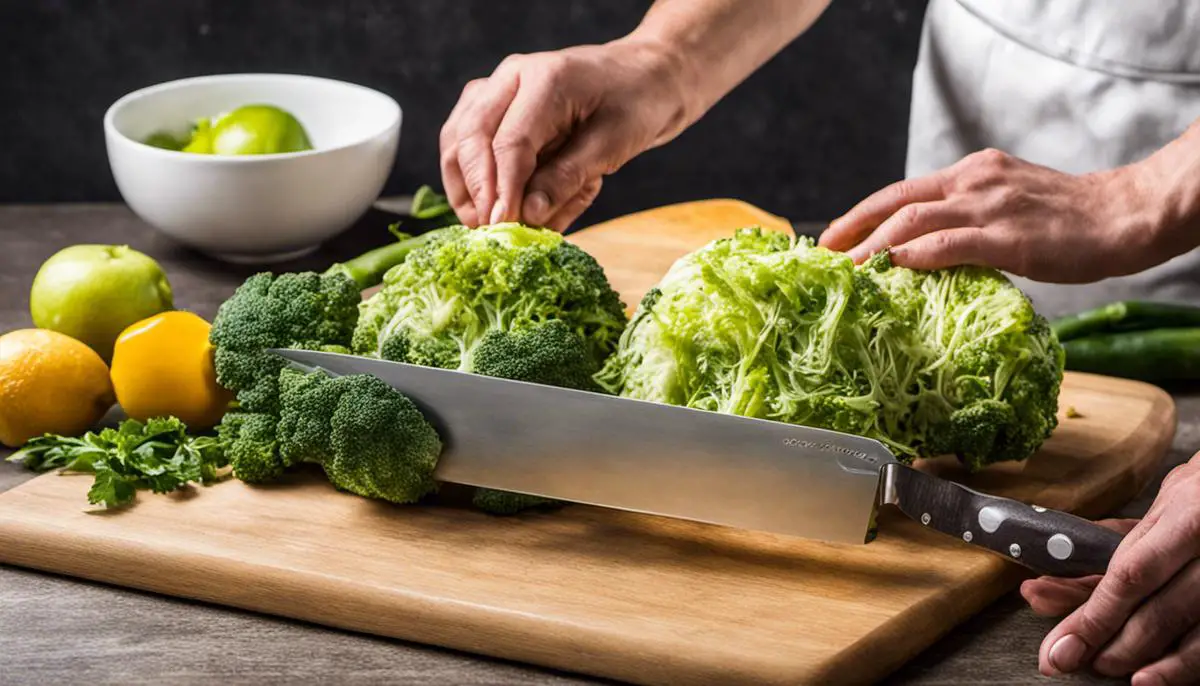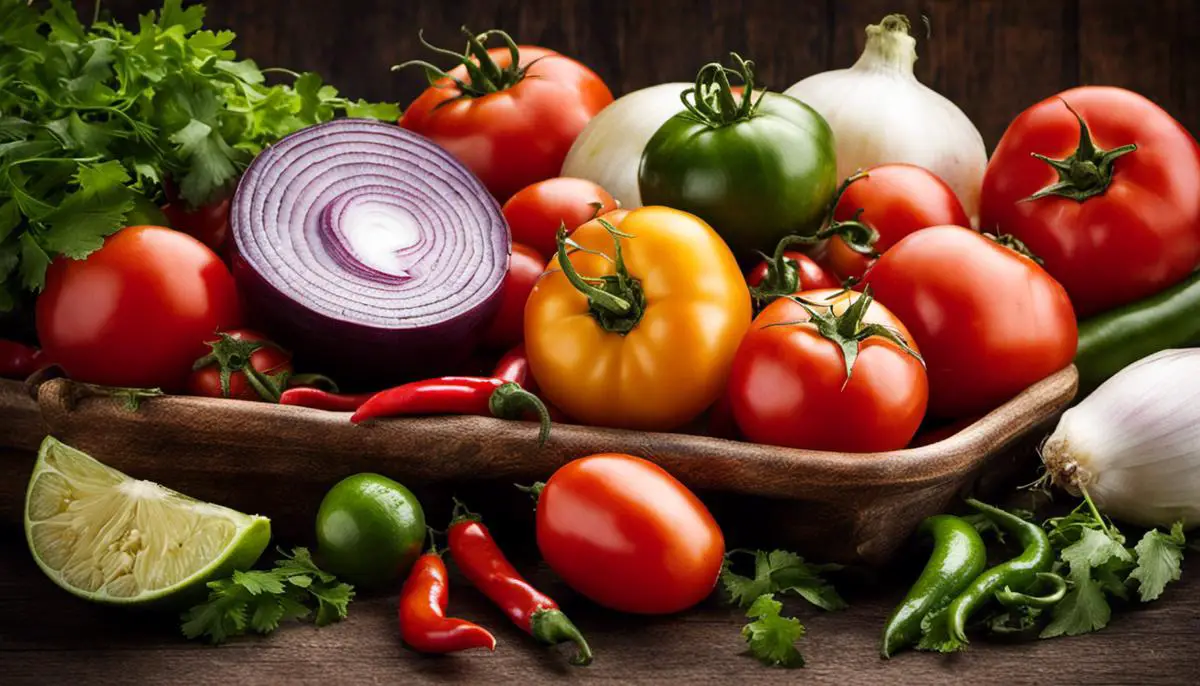Table of Contents
Delightful on a sunny afternoon or as the star player of a tailgate spread; few things are universally loved by enthusiasts of all food varieties as a bowl of homemade fresh tomato salsa. A perfect blend of bright, juicy tomatoes, crisp onions, fiery jalapenos, fragrant cilantro, and zesty lime, salsa is much more than a mere dip, it’s the marriage of several robust flavors. Understanding how to work with these ingredients, mastering the art of chopping, and balancing flavors precisely, can transform a simple bowl of salsa into a culinary marvel that intrigues your taste buds. These are the keys to making an unforgettable fresh tomato salsa.
Understanding the Ingredients
Choosing the Best Tomatoes
When selecting tomatoes for your fresh salsa, look for those that are firm to the touch, but with a slightly soft exterior. They should be bright in color and heavy for their size, which indicates they are juicy and flavorful. The best tomatoes for fresh salsa are typically Roma tomatoes, due to their robust flavor and low water content. However, feel free to experiment with a variety of tomatoes, like cherry or heirloom, to yield different flavors and colors in your salsa.
Understanding Onions Varieties
Onions come in various types, each bringing a different flavor profile to your salsa. Yellow onions are your classic cooking onion, providing a balance of sweet and astringent flavors. Red onions, on the other hand, are more bold and spicy, and their vibrant color can add a striking contrast to your salsa. White onions have a milder and sweeter flavor, making them a great option for fresh applications like salsa. Choose onions that are heavy for their size with a strong, bold aroma.
Choosing and Preparing Jalapeños
Jalapeños are an essential ingredient to add heat to your salsa. The heat level of a jalapeño is determined by many factors such as its size, maturity, and growing conditions. Generally, smaller jalapeños tend to be spicier. You can control the heat level in your salsa by removing or leaving in the seeds and veins—the capsaicin, which produces the heat, is concentrated there. Always handle jalapeños with caution, and consider wearing gloves to protect your skin from potential burns.
Selecting Fresh Cilantro and Lime
Cilantro brings a distinctive freshness and slight citrus tone to the salsa. Choose bunches that have bright green leaves without any yellowing or wilting. The leaves should be perky and the stems should snap, not bend, when you break them. Similarly, for limes, select ones that are firm and heavy for their size, which indicates plenty of juice. The skin should be smooth and brightly colored. Limes and cilantro not only add flavor but also serve as preservatives keeping your salsa fresher for longer.

Mastering the Chopping Technique
The Basics of Chopping
The fundamentals of chopping primarily involve a sharp knife and a solid chopping board. Make sure your knife is well sharpened, as a dull blade can slip on the slick surface of a tomato and cause injury. Keep your fingers curled under on your non-dominant hand while gripping the food firmly to ensure safety.
Chopping Tomatoes
When chopping tomatoes for your fresh tomato salsa, it’s important to create uniformly diced pieces for an appealing texture. This starts with washing and then coring your tomatoes. To dice them evenly, slice off the top and bottom of each tomato to create flat surfaces. Stand the tomato upright on one flat end then cut it in half vertically. Lay the halves flat side down, cut them lengthwise into strips and then crosswise into a dice using the grid method. This will ensure your tomatoes are uniformly chopped.
Working with Onions
Onions can be a bit of a challenge due to their tendency to make your eyes water. Start by cutting off both the ends, then cut the onion in half from top to bottom. Peel off the skin. Lay each half flat on the cutting board, then make several vertical cuts without slicing all the way through the back of the onion. Finally, chop across your vertical cuts to create a fine dice.
Dealing with Jalapenos
Jalapenos can add a nice kick to your salsa, but the heat primarily resides in the seeds and the ribs, so you can adjust to your liking. Remember to wear gloves when chopping jalapenos to avoid the “hot pepper hands” phenomenon. Slice off the top of the jalapeno then cut it in half lengthwise. Use a spoon to scoop out the seeds and ribs. Lay the halves flat, then cut into strips before finally dicing into small pieces.
Chopping Cilantro
For cilantro, the ‘roll-and-chop’ method works best. Start with a bunch of fresh cilantro and remove the leaves from the stems. Gather the leaves into a pile and roll them into a tight bundle. Then, use your knife to finely chop the bundle. This method will keep the leaves intact and prevent them from being overly bruised.
In essence, mastering these chopping techniques will not only aid in the preparation of your fresh tomato salsa but will also enhance your overall culinary skills.

Balancing Flavors
Balancing Flavors in Salsa
Balancing flavors in fresh tomato salsa is a culinary art that rewards the taste buds when done correctly. It’s understanding the science of taste, appreciating how different ingredients work in symphony to create a harmonious, flavorful blend. Central to this is the interplay of five basic tastes – sweet, salty, sour, bitter, and umami.
You might have noted the tangy zing that lime juice confers to your salsa – that’s the sour element at play. Lime juice isn’t merely a flavor enhancer, it helps balance the sweetness of the tomatoes. How much lime to add, however, depends on your preference. Start small, and taste as you go. Increasing the sour levels in your salsa can help bring out other flavors, but go too far and you might obscure the natural sweetness of the tomatoes.
Salt is another vital ingredient in salsa. Like lime juice, salt isn’t only there to make your salsa taste salty. Salt can enhance the flavors of other ingredients by reducing the perception of bitterness, thus amplifying sweetness and umami – or savory flavors in your salsa. Again, the amount of salt you add to depends on personal preference. Add it in small increments and continue to taste your salsa as you mix.
Understanding Umami
Umami, also known as savory, is the fifth taste that many people overlook. It’s the deep, rich, meaty flavor that makes food super satisfying. Ingredients like tomatoes, onions, and cilantro all have umami qualities that can make your salsa taste more robust.
You might also consider adding a dash of soy sauce, or a hint of fish sauce. Both are laden with umami and can add a depth of flavor that’s subtly noticeable, yet profound.
The Science of Flavor Interaction
Flavor interaction isn’t just about adding ingredients together and hoping for the best. There’s an actual science to it – the chemical reactions occurring when different ingredients mix can create new flavors, enhance existing ones or mute others. It’s like a symphony where each ingredient plays a unique role.
When you’re mixing your salsa, realize that it’s not just tomatoes, onions, and chili peppers. There are countless chemical compounds at work, each contributing to the final taste. The lycopene in tomatoes, for instance, works with specific acids and sugars to create a taste that’s unique to tomatoes. The capsaicin in chili peppers produces a heat feeling, which can enhance other flavors. The balance between these compounds and others determines the final taste and enjoyment of your salsa.
By understanding how these flavors interact, you can tinker and experiment with your salsa recipe. Remember, balance is key. You want to taste each ingredient while letting the symphony of flavors sing in harmony. Mastering this is an art, and the best way to get there is by tasting and adjusting continually.

The joy of making fresh tomato salsa lies not just in the tangy bite of the ripe tomatoes or the crunchy aftertaste of the onions; it extends to understanding the science of flavors, the interaction of various elements, and the sense of satisfaction when all these components harmonize into a bowl of perfect salsa. It’s an art that goes beyond the kitchen knife and chopping board, and into the domain of sensory delight. So, armed with your newly acquired knowledge of ingredients, chopping techniques, and understanding of flavor balance, step into your kitchen and let the magic unfold. Remember, the secret to the best salsa lies in the freshness of your produce, the finesse of your chopping, and the balance of your flavors. Here’s to elevating your salsa-making experience to a gastronomical adventure.
